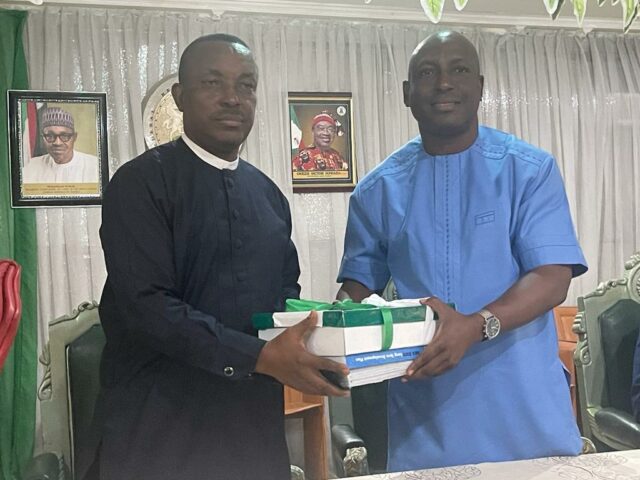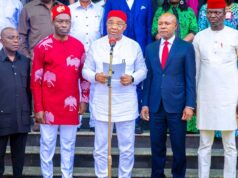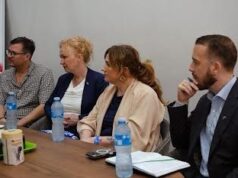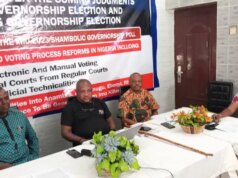During his visit to the Geometric Power group in Aba, Abia State, on Wednesday, August 22, 2024, the British High Commissioner to Nigeria, Richard Montgomery, said he found the Geometric Power model in providing regular, quality and affordable electricity impressive. Though the press did not report the features of the Aba Independent Power Project that impressed him, the media disclosed that the diplomat expressed satisfaction with “the state-of-the-art facilities” he inspected.
When President Olusegun Obasanjo was granting a special licence to Geometric Power to build a gas-fired plant in Aba and also an electricity distribution company before the private sector was allowed to participate in the power business through the Electric Power Sector Reform Act of 20005, the administration announced that it wanted the new arrangement in Aba to serve as a model that could be replicated elsewhere. Though Obasanjo was no longer in office when the Independent Aba Power Project was completed, he announced, through his son, Dr Seun Obasanjo, at the commissioning last February 26 that he felt p vindicated.
Also speaking at the ceremony, the Minister of Power, Chief Adebayo Adelabu, disclosed that the President Bola Tinubu government has been studying the Aba model intending to replicate it across the country. Two recent major developments in the power sector indicate that the lessons from the Aba model are being already implemented.
The first is the recent report that the Nigeria Electricity Regulatory Commission (NERC) has directed electricity-generating companies to supply power directly to electricity-distributing firms rather than go through the Nigeria Bulk Electricity Trading Company (NBET). This means that the electricity distributing companies, popularly known as DisCos, will no longer receive subsidies from the Federal Government through NBET for under-recovery.
This is the Aba model in that since it began commercial operations in September 2022, the Aba Power Electric Company has not received even a kobo subsidy from the Federal Government or any of its agencies. In contrast, the other 11 DisCos in the country which are successor companies to the Power Holding Company (PHCN) assets privatized in November 2013 have been receiving hundreds of billions of naira in subsidy.
The irony is that Aba Power charges a lower tariff than the other 11. Its Band A customers who receive at least 20 hours of supplies daily pay N117 per kilowatt hour (kWh)while the other DisCos charge their customers N206.80 kWh, a significant difference. The Geometric Power Plant has also not received any subsidies. The Federal Government thinks that if the two firms within the Geometric Power group could survive since their inception without subsidies, the other DisCos and GenCos in Nigeria can learn to survive without subsidies and thrive.
Laudable as it may seem to ask the other DisCos and GenCos to borrow a leaf from the Geometric Power group, there are two major implications of the Federal Government compelling the other firms inherited from the PHCN to stand on their own fully. One is that their tariff is likely to rise significantly once they stop getting subsidies. The second has to do with NBET’s continued relevance. NBET was not created to exist in perpetuity. It’s rather a transition body. It’s designed to cease to exist when the electricity market matures. The time has come for the nation to have an honest, frank conversation on the state of the DisCos which some analysts regard as the weakest link in Nigeria’s electricity value chain.
The Geometric Power model seems to have influenced the recent statement by the Minister of Power that the DisCos are too large and, therefore, need to be broken up for effectiveness and efficiency. The Assets Management Company of Nigeria (AMCON), Gbenga Alade, has also stated that the DisCos cover unduly wide areas. True, they cover large swaths of territory, with each covering several states except the Eko and Ikeja DisCos in Lagos whose coverage areas don’t go beyond the nation’s commercial capital.
To compound matters, the management systems of the other 11 DisCos are centralized in an era when firms abroad have been decentralizing. The DisCos may not be blamed because of the high trust deficit in our country. As a result of the centralization, for instance, the Benin Electricity Distribution Company staff in Ekiti State will have to travel to Benin City in Edo State for routine matters. The Benin DisCo covers Delta, Edo, Ekiti, and Ondo states. The Ibadan DisCo has a bigger coverage area, as Oyo, Ogun, Osun, Kwara, and parts of Niger, Ekiti, and Kogi states are serviced by it. The Northern DisCos naturally have larger territories.
In contrast, the Aba Power ring fence covers only nine of the 17 local government areas in Abia State. It makes the company agile and enables it to respond swiftly to challenges. The power minister is then justified to call for a review of the coverage ares by the distribution companies.
The third lesson from Geometric Power is its end-to-end system of power delivery. It generates its own electricity and distributes it, though owing to an unreliable gas supply from a domestic producer in its neck of the woods it has not enjoyed the benefits of this system well. This is the system adopted by the Apple Corporation which does its own hardware and software, making it an integrated company. This is in contrast to its notable computer rival, Microsoft, which engages only in the software business. Business leaders and analysts agree that the end-to-end system adopted by Apple gives it a precious competitive advantage.
The problem with practising this system in Nigeria’s power sector is the prohibitive cost. It costs between $1.3m and $1.5m to establish just one megawatt of a gas-fired plant. It costs more to build a coal, solar, or hydro plant of the same size. Nigeria’s DisCos which are not yet creditworthy can’t dream of establishing their own power-generating facilities like Geometric Power. Ikeja DisCo, the most professionally run of all the Discos inherited from the PHCN, is owned by the same consortium that owns the Egbin Power Plant in Lagos, but its electricity is taken to the national grid rather than dedicated for the use of customers in a particular location. This is the major difference between it and the Aba Independent Power Project, and this difference enables Geometric Power to be Nigeria’s foremost integrated electricity organization.
The Aba model needs to be replicated in other parts of Nigeria.
Nzerem wrote from the Federal University of Technology, Owerri, Imo State.








